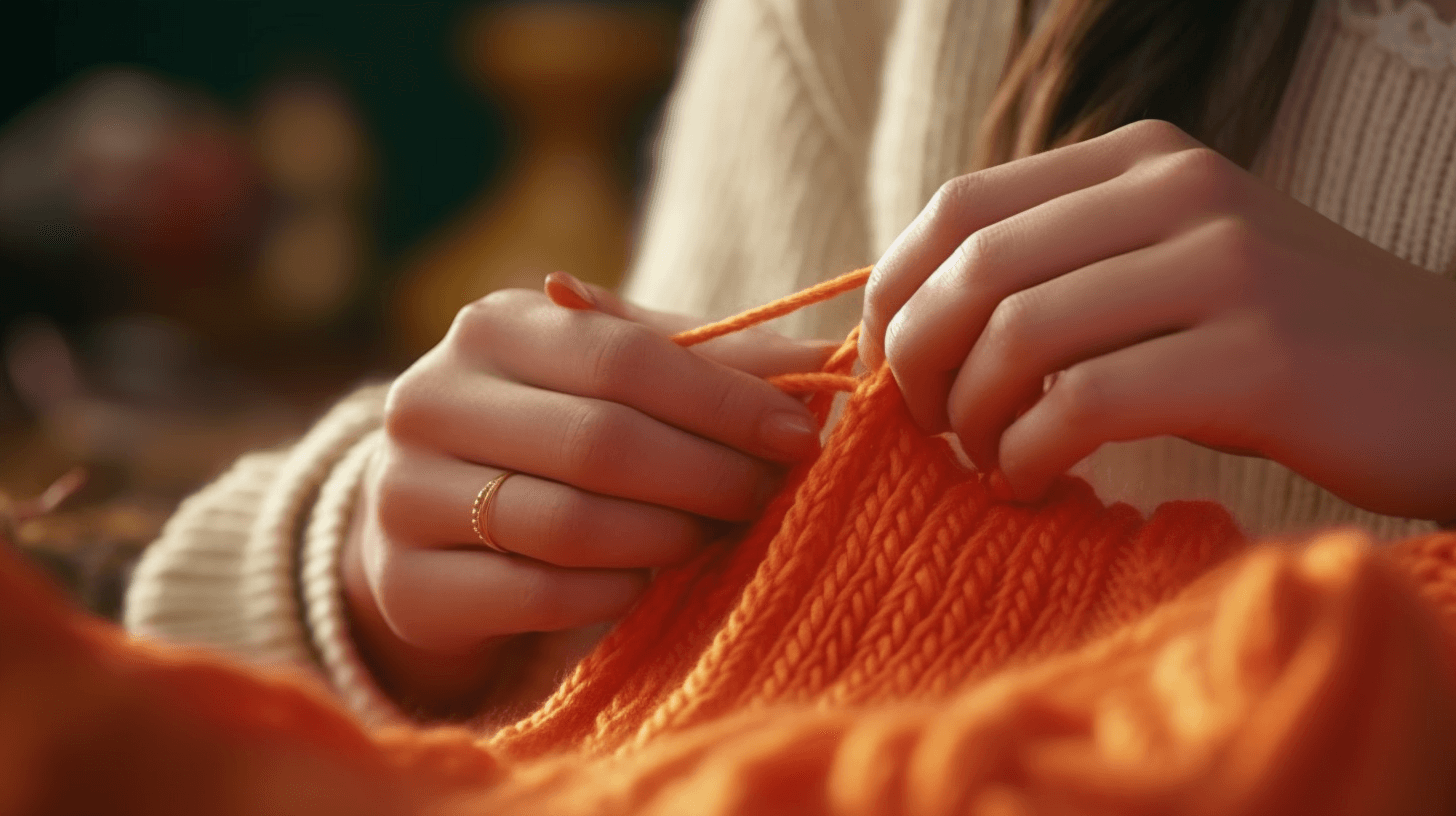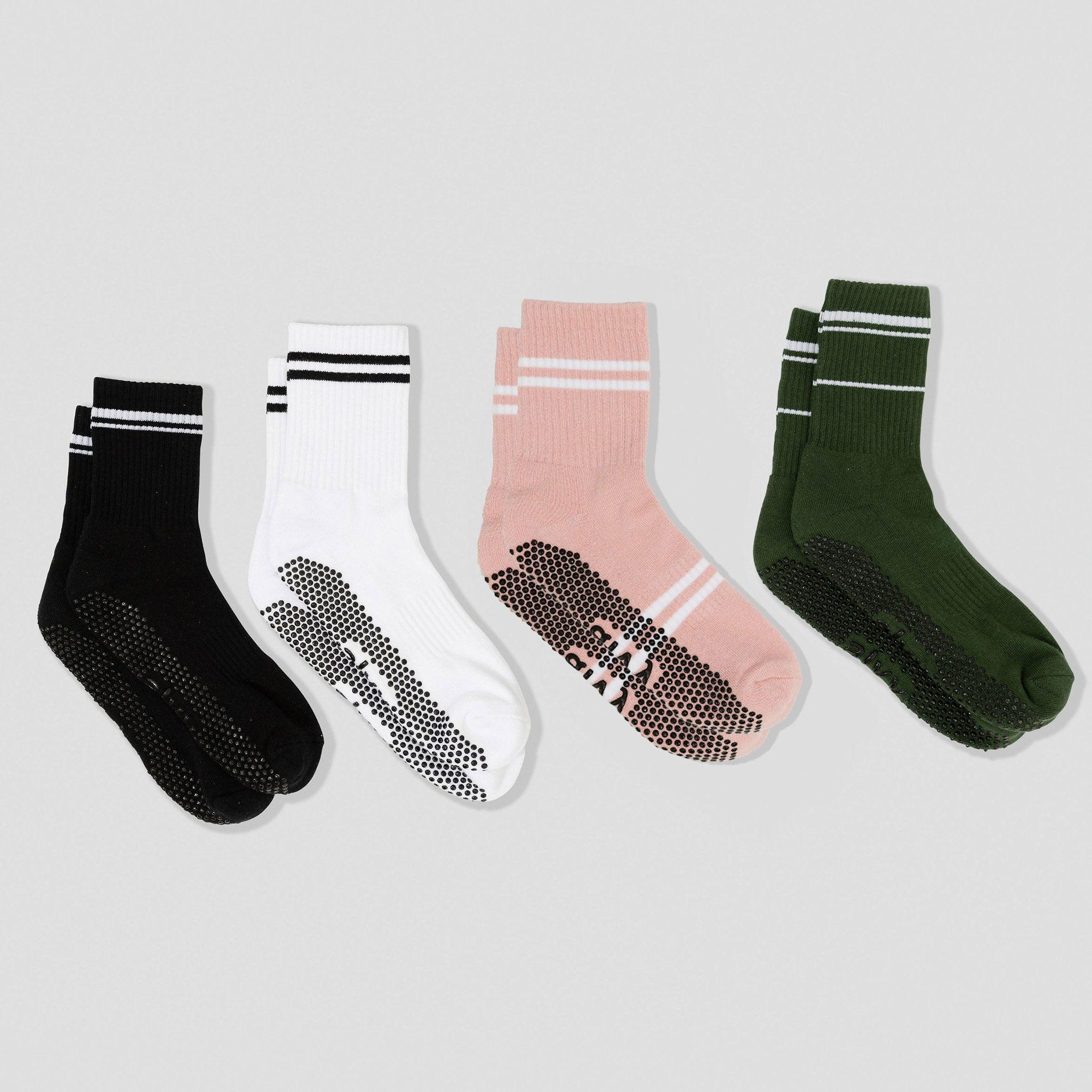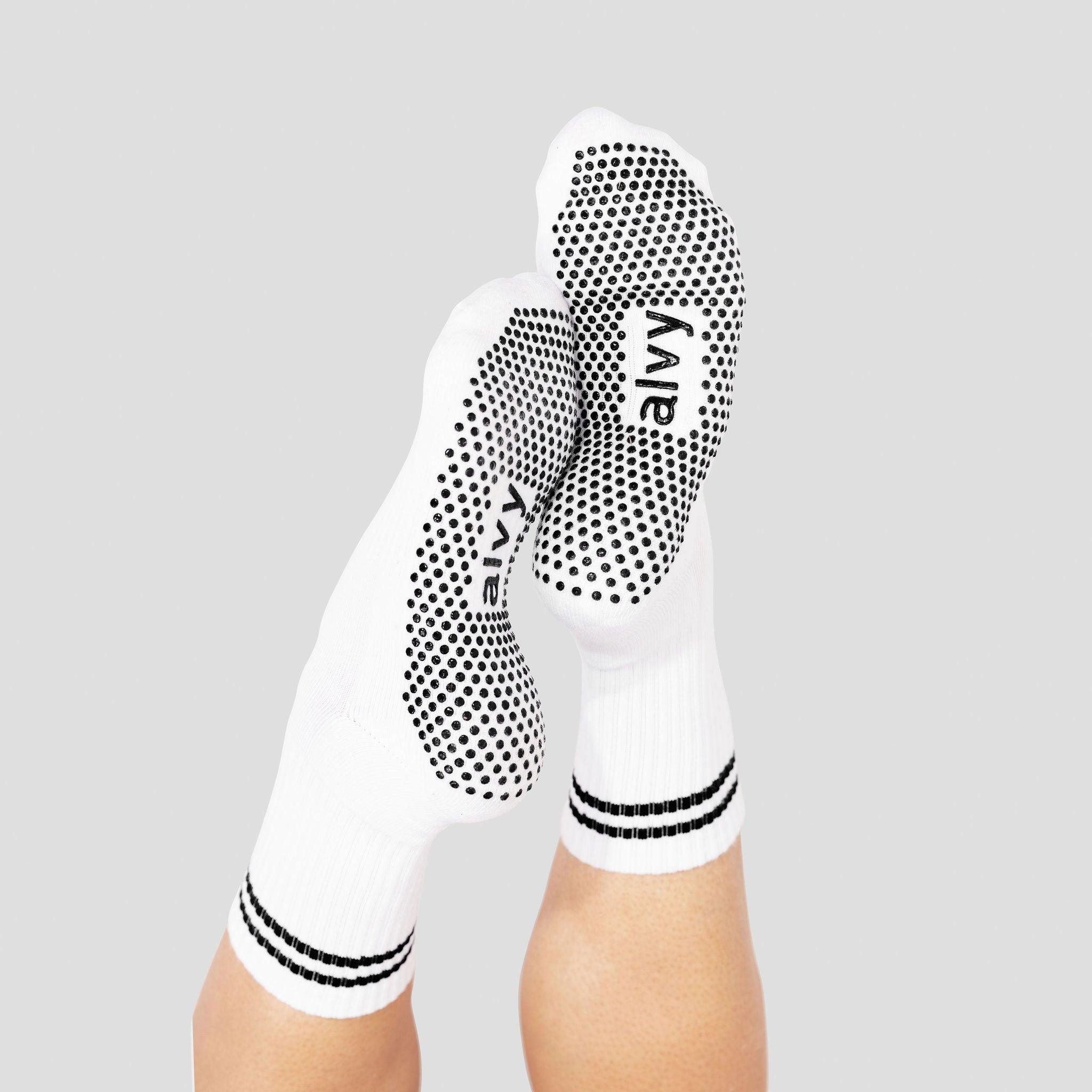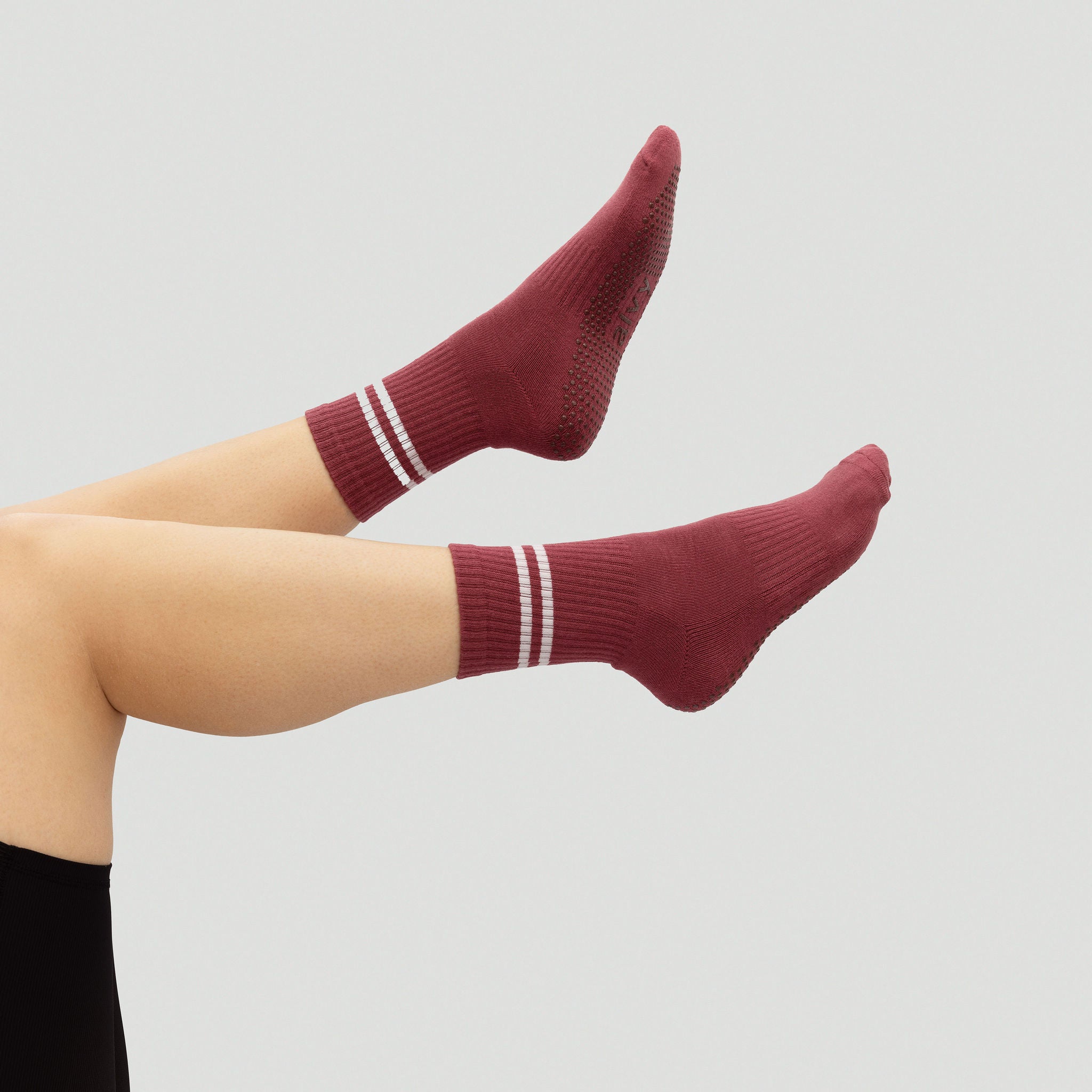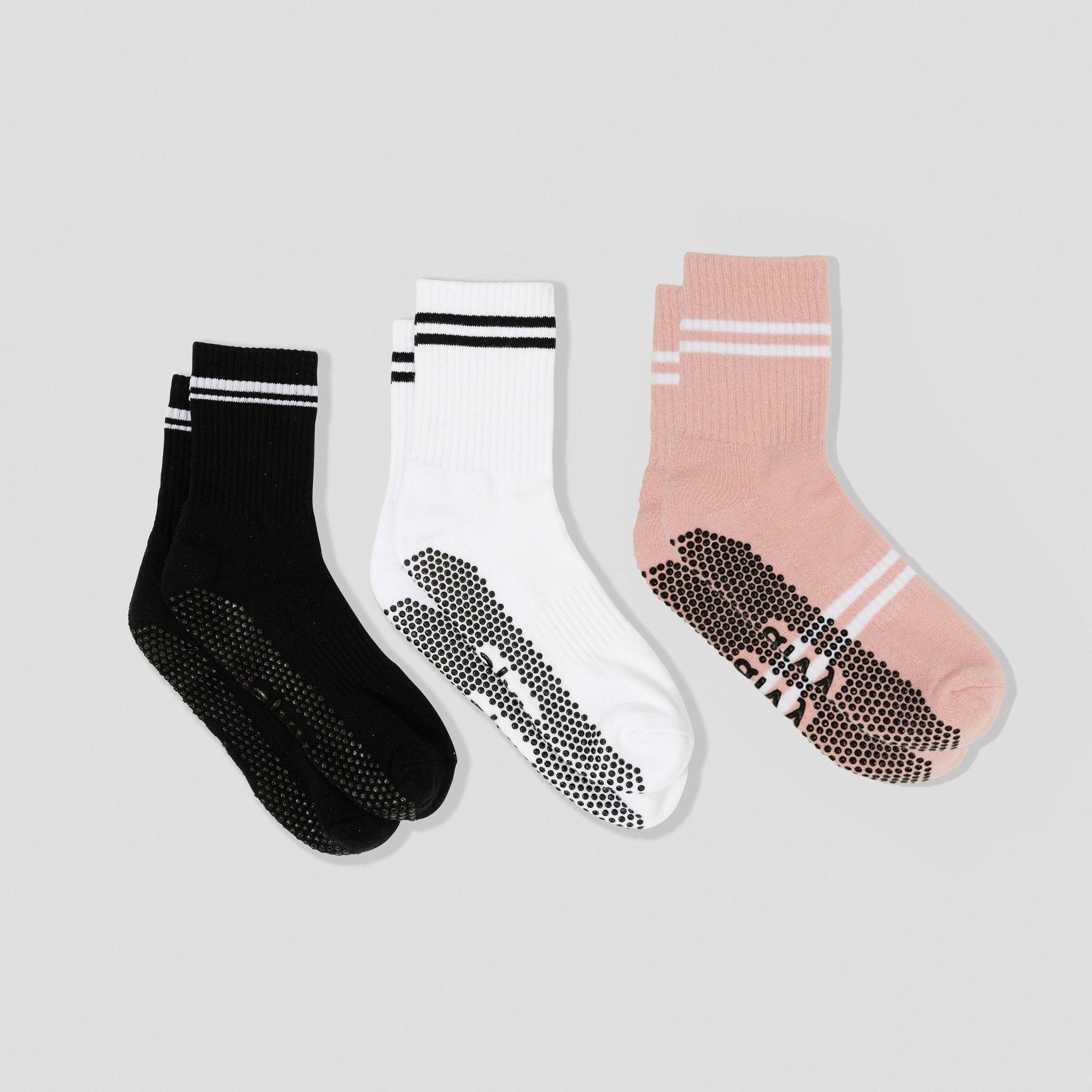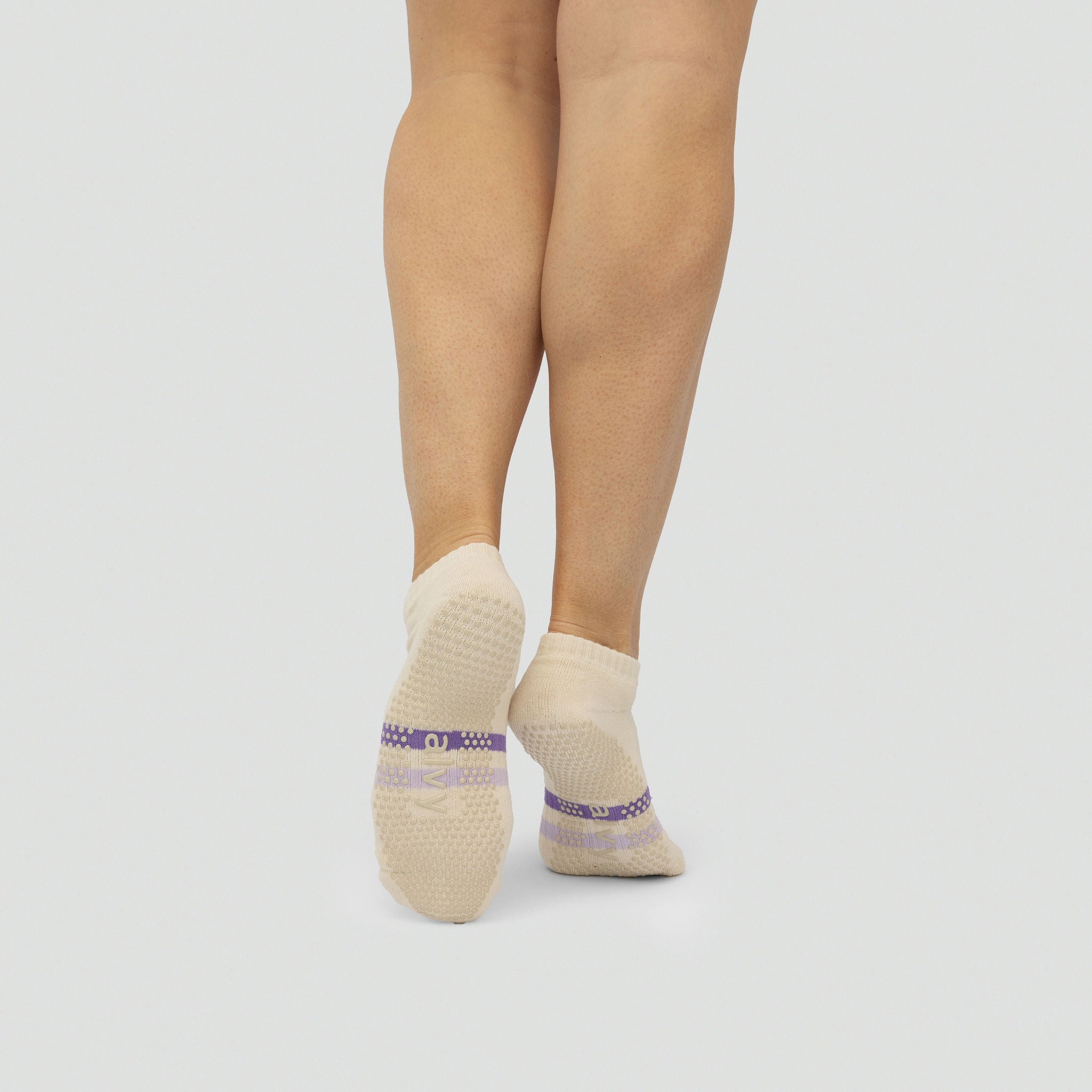Yoga socks have been gaining popularity in the fitness world due to their non-slip design, which provides a better grip and stability during yoga practice. However, some people wonder if these socks can also be used for other exercises, such as Pilates.
While some Pilates practitioners prefer to exercise barefoot, others may find it uncomfortable or unsanitary. In short, the answer is yes you can use yoga grip socks for Pilates but it depends on several factors. In this article, we will explore the pros and cons of using yoga socks for Pilates and provide tips on how to choose the right grip socks for Pilates.
Key Takeaways
- Yoga socks can be used for Pilates, but it depends on personal preference and the type of Pilates practice.
- Yoga socks provide a non-slip grip and stability, but they may not offer enough support or cushioning for some exercises.
- When choosing yoga socks for Pilates, consider the material, size, and design, and make sure to maintain and care for them properly.
Do People Wear Yoga Socks for Pilates?
Yoga socks are designed to provide extra grip and stability during yoga practice. They are typically made with non-slip soles and toe separators to help with balance and alignment. Pilates also requires a lot of balance and stability, which is why some people may consider wearing yoga socks during their Pilates sessions. For example, if you have sweaty feet or are practicing on a slippery surface, yoga socks can provide extra grip and prevent you from slipping and sliding around.
However, it's important to note that Pilates exercises involve a lot of footwork, and wearing socks with too much grip can actually hinder your movements and limit your range of motion. In fact, some Pilates instructors may even discourage the use of yoga socks in their classes.
Benefits of Using Yoga Socks for Pilates
Pilates is a low-impact workout that demands a great deal of balance and control. To guarantee a safe and efficient workout, it's critical to have the appropriate equipment. For Pilates practitioners, there are many reasons to wear grip socks in Pilates.
1. Improved Grip
To improve grip on the mat, yoga socks are made with non-slip soles. This is particularly crucial for Pilates movements that call for a high degree of stability and balance. Yoga socks take the anxiety out of slipping or sliding on the mat, allowing you to concentrate on your form and movement.
2. Enhanced Stability
Many of the movements and footwork in Pilates exercises call for stability. Yoga socks provide your feet with additional support, which can enhance your stability and balance when working out. Additionally, the socks offer a layer of padding that can lessen the strain on your joints & feet.
3. Infection Prevention
Gyms and Pilates studios are busy places where bacteria and germs may proliferate readily. Yoga socks act as a barrier between your feet and the mat or equipment, helping to keep infections at bay. If you have any cuts or blisters on your foot, this is very crucial.
Disadvantages of Using Yoga Socks for Pilates
1. Potential Discomfort
While yoga socks could offer some stability and grip during Pilates exercises, they might also be uncomfortable for certain people. Exercises that require flexing and pointing the feet are especially susceptible to pressure spots or movement restrictions due to the additional material and tejkkkknkjjhxture of the socks. It's critical to pay attention to your body's signals and modify your footwear as necessary because pain can result in poor form and even injury.
2. Socks vs. Barefoot
Though there might be some advantages to using yoga grip socks for Pilates, it's crucial to understand the distinctions between grip socks and barefoot exercises. Exercise that is done barefoot promotes a closer connection to the ground and can enhance proprioception and balance. Socks can offer additional support and grip. Furthermore, not all Pilates equipment is appropriate for grip socks, especially those with flat surfaces that need bare skin for a secure grip.
Choosing the Right Yoga Socks for Pilates
Pilates and yoga share a lot of similarities, and it is not uncommon for practitioners of one to try the other. While yoga socks are specifically designed for yoga, they can also be used for Pilates. However, it is important to choose the right clothing for Pilates to ensure maximum comfort and performance.
Material
The material of the grip socks is an important factor to consider when using them for Pilates. Pilates involves a lot of movement and stretching, which can cause your feet to sweat. It is important to choose non-slip yoga socks made from breathable materials that can wick away moisture to keep your feet dry and comfortable. Cotton, bamboo, and synthetic materials like polyester and nylon are all good options.
Design
There are several styles of grip socks, such as full-toe, half-toe, and open-toe. While full-toe socks offer optimal warmth retention and maximal coverage, their flexibility may be compromised compared to that of half-toe or open-toe socks. For Pilates, half-toe and open-toe socks are a preferable option since they provide more flexibility and grip.
Related: Toe vs toeless grip socks which is better?
The grip on the socks' bottoms is another aspect of the design to take into account. Since traction is necessary for many of the exercises in Pilates, it's critical to select yoga socks with a non-slip grip. While some yoga socks provide a full sole grip, others contain silicone or rubber dots on the bottom. Select a grip that suits your body type and level of Pilates proficiency.
Size and Fit
Selecting the appropriate size and fit of yoga socks is essential to achieve optimal comfort and effectiveness. Although they should fit tightly, grip socks shouldn't be overly constrictive. Additionally, they shouldn't be very baggy because this could make them slide about when performing Pilates exercises.
To achieve a correct fit, measure your foot and consult the manufacturer's sizing chart when selecting the size of yoga socks. While some yoga socks come in one size fits all, others are available in several sizes. In order to get optimal comfort and performance throughout your Pilates practise, it is crucial to select the appropriate size.
Maintenance and Care of Yoga Socks
The purpose of yoga grip socks is to give the practitioner stability and traction while doing poses. For yoga socks to last a long time and be effective, proper upkeep and care are necessary. The following advice will help you preserve and take care of your yoga socks:
Washing
To get rid of perspiration and bacteria, wash your yoga socks after every use. Yoga socks should be hand-washed in cool water with a light detergent. Bleach and fabric softeners can cause harm to the cloth and reduce its grip, so stay away from using them. Squeeze out any extra water after washing, then allow them to air dry.
Storage
Yoga socks should be stored properly to preserve their shape and avoid damage. It is advised to store grip socks out of direct sunlight in a cool, dry environment. They should not be kept in a moist or humid environment as this might lead to the formation of mould and mildew.
Replacement
Yoga socks have a limited lifespan and should be replaced when they start to lose their grip or show signs of wear and tear. It is recommended to replace yoga socks every 6-12 months depending on usage.
Frequently Asked Questions
Are grip socks necessary for Pilates?
Grip socks are not necessary for Pilates, but they are highly recommended. Pilates involves a lot of movements that require balance and stability, and grip socks provide an extra level of support and traction. They also help to prevent slips and falls, which can be dangerous during a Pilates workout.
Can you wear regular socks for Pilates?
Normal socks are not recommended for Pilates, as they do not provide the same level of support and traction as Pilates socks. Regular socks can also be slippery on smooth surfaces, which can be dangerous during a Pilates workout. It is best to wear grip socks or Pilates socks specifically designed for this type of exercise.
What is the difference between yoga socks and Pilates socks?
Yoga socks and Pilates socks are similar in many ways, but there are some key differences. Yoga socks are typically designed with a non-slip sole to provide traction on yoga mats, while Pilates grip socks often have grips on both the sole and the top of the foot to provide extra stability during Pilates exercises. Additionally, Pilates socks are often made with breathable materials and may have additional features like arch support or compression.
What are the best Pilates socks available in Australia?
There are many different types of Pilates socks available in Australia, and the best option will depend on individual preferences and needs. Some popular options include ALVY, Tavi Noir, and Sticky Be Socks. It is important to choose grip socks that fit well and provide the necessary support and traction for Pilates exercises.


